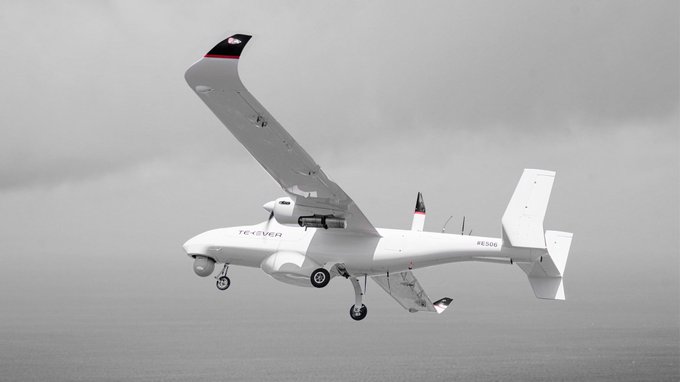“…While orbiting south of the runway in preparation for landing, both the unmanned aircraft’s engines shut down unexpectedly. The External Pilot on the ground, who was visual with the aircraft, took control and landed it without further incident. The dual-engine shutdown was likely to have been caused by an on-aircraft data error. Various safety actions, including improvements to the aircraft’s hardware and software, and the Ground Control Station software, have been taken to reduce the risk of a reoccurrence.
History of the flight
The unmanned aircraft, G-TEKV, was returning to Lydd Airport from a flight over the English Channel. Flight operations were conducted from a Ground Control Station (GCS) where the crew control the aircraft from takeoff to landing and operate the payload to fulfil the mission objectives. The GCS contained two stations, the flight GCS (fGCS) and the mission GCS (mGCS). The fGCS focused on all aspects of the control of the aircraft platform, whereas the mGCS focused on the mission goals and operation of the payload.
The GCS was manned by the Mission Commander (MC), the oncoming Internal Pilot (IP), the off-going IP, and the Payload Operator (PO). An External Pilot (EP)1
and a Maintenance Technician (MT) were positioned at the side of the runway abeam the intended touchdown position for the aircraft and both could communicate with the IP through airband radios.
While the aircraft was orbiting off the coast prior to transiting back to the airfield, the two IPs conducted a handover; the off-going IP remained to act as a second pilot to assist with the conduct of the remainder of the flight. Meanwhile the EP advised that the wind favoured a landing on Runway 03 with a light crosswind.
The aircraft transited towards the airfield at 700 ft amsl to remain clear of the cloud and icing. On reaching Echo Point, overhead the airfield, the aircraft entered an orbit while the IP, assisted by the off-going IP, proceeded to load the mission waypoints for a landing on Runway 03.
Meanwhile, the EP reported to the GCS that he could hear the aircraft but was not visual with it. The MC instructed the IP to descend the aircraft to 600 ft
at which point the EP confirmed that the aircraft was visual and clear of cloud.
With the aircraft established at 600 ft in the orbit at Echo Point and the mission points uploaded, the IP informed the EP that the aircraft was set up for the landing. The EP acknowledged and the IP switched the aircraft to route mode2 to proceed with the approach and landing on Runway 03. After the aircraft completed two more orbits, the crew in the GCS noticed that it did not appear to leave the orbit at the expected point to establish itself downwind.
As the aircraft flew the final orbit, the EP outside was expecting the call ‘downwind’ from the GCS team. He noticed the aircraft level its wings, as expected when departing the orbit, but observed the nose drop more than normal. At this point the EP became aware that he was not able to hear the aircraft’s engines. He operated the throttles and confirmed that there was no engine response. The EP switched to fly-by-wire (FBW)3 mode, took control of the aircraft, confirmed control response, and instructed the MT to inform the GCS about the complete loss of engine power.
While this was happening, the flight team in the GCS was first alerted that something was amiss when they observed the aircraft fly on a westerly heading towards the runway and not along the expected track to establish itself downwind parallel to the runway.
None of the team reported seeing or hearing any alarms or warnings. The MC noticed that the height of the aircraft appeared low, and the off-going IP then noticed that the displayed parameters for both engines indicated zero rpm.
The MC, unaware that the EP had already taken control of the aircraft, gave instructions to the IP to advise the EP to do so and went outside the GCS to observe the aircraft. The MT advised the IP that the EP had already taken control and so, from that point on, the IP provided speed information to the EP until the aircraft had landed.
The EP assessed the conditions and positioned the aircraft on final approach; it landed without further incident.
